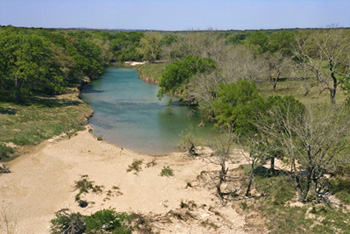A Case Study in Groundwater Use: Texas
Suppose you have $500 in your bank account. You stop by the mall and pick up a few new outfits and end up with just $250 left. But then you get a $200 paycheck from your work. How much do you have now? You now have $450. If you keep spending $250 every week and only make a $200 paycheck, can you keep it up for long? Obviously not.

Case Study: A Problem in Texas
In Texas, residents pump out about 3 trillion gallons of groundwater every year. Natural recharge only supplies back about 1.5 trillion gallons each year. It’s like spending more money than you make. Much of that groundwater was once used for irrigating crops, but less and less of the state is now being farmed; most of the water is now used for drinking water. As more people move to Texas, the need for drinking water increases. Severe droughts in the 1990s were a "wake-up call" to many residents of the state; Many Texans began to realize that growing populations and growing demands for groundwater were putting strains on their aquifers.
As aquifers become depleted of crucial groundwater, residents increasingly rely on surface water, drawing water from rivers and streams instead of from the aquifers.